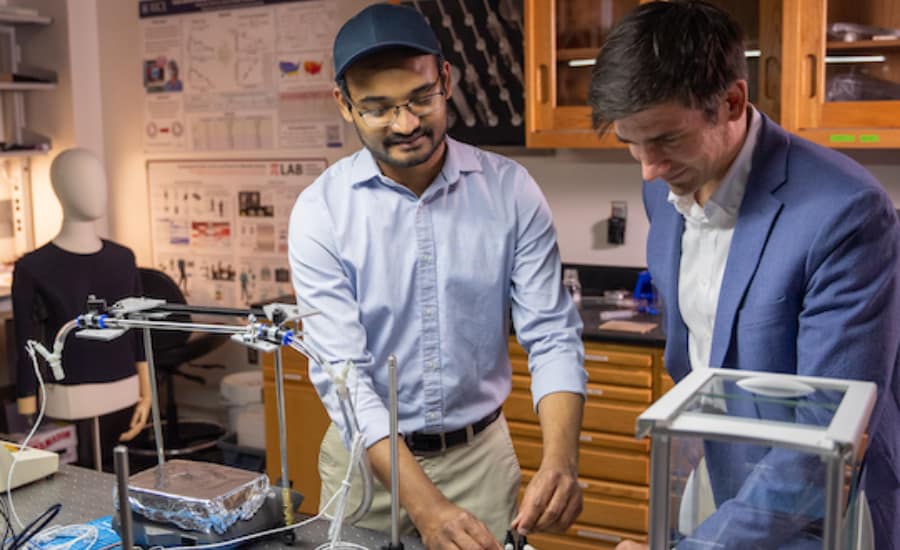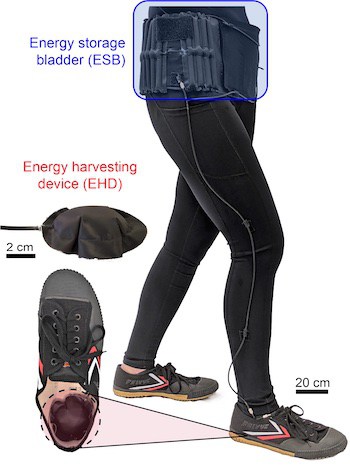US engineering students design pneumatic device to help people with reduced arm or hand mobility
Mechanical engineers at a university in Houston, Texas, have built a “handy extra limb” able to grasp objects and go, powered only by compressed air, to help people with reduced mobility in their arms or hands.
The device designed at Rice University’s George R. Brown School of Engineering is one of several ideas its team of engineers implemented with a textile-based energy harvesting system.
The proof-of-principle robotic devices designed and built by Daniel Preston, Assistant Professor of Mechanical Engineering, lead authors Rachel Shveda and Anoop Rajappan and their team, are geared around those living with disabilities and are tough enough for everyday use.
A pneumatic device is a tool or instrument that generates and utilises compressed air.
These pneumatic devices derive their power from walking, the prototype “arm” is a piece of fabric that hugs the body when not in use, but extends outward when activated and incorporates an elastomer lining on the surface to maintain its grip on slippery objects.
The arm can be operated with a switch. Daniel said future versions could have sensors that anticipate the wearer’s intent and complete the movement.
In addition to the curling arm that can grip a cup or other small objects while one’s hands are full, the Rice lab built a shirt with a bellows-like actuator attached at the armpit that expands, enabling the wearer to pick up a 10-pound object. Testing the products on a mannequin showed that this could be done without an assist from human muscles.
The system requires two components: textile pumps embedded in the soles of walking shoes that harvest air pressure and pneumatic actuators that make use of that pressure where needed. The pumps are filled with open-cell polyurethane foam that allows them to recover their shape after every footfall.
Daniel said the pump is small enough to be comfortable: “The stiffness of the foam is about on par with a typical shoe insert.” He said, “We wanted to make sure this felt like something you’d actually want to have inside of your shoe.”
Tests by the Rice lab showed the devices produce the equivalent of 3 watts of power with a conversion efficiency of more than 20 percent.
Daniel said all the components for a single device cost the lab about $20. The products were simple to assemble and robust enough to clean in a washing machine with no degradation in performance.
“The fabrication approach uses techniques that are already employed in the garment industry, things like cutting textile sheets and bonding them with heat and pressure.
“We’re ready to think about translating our work towards products.” Daniel comments, he also noted that conversations with fashion consultants could be in the future of the device.




